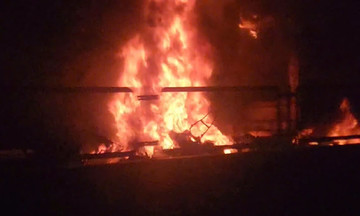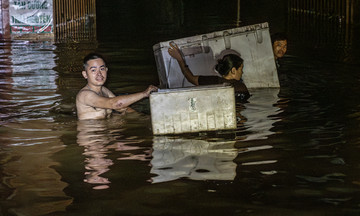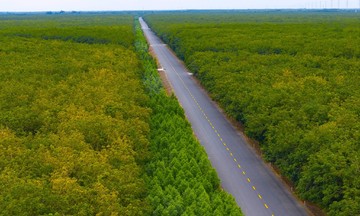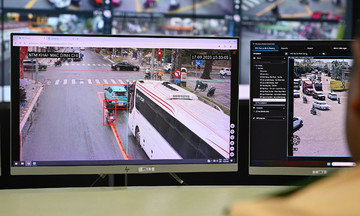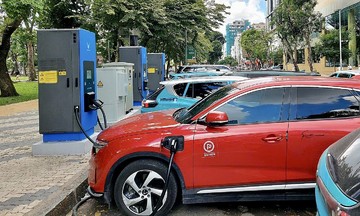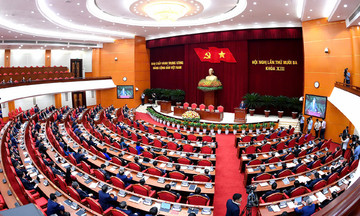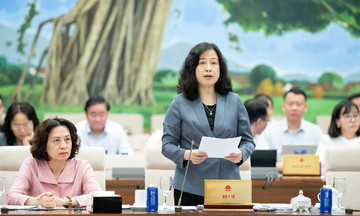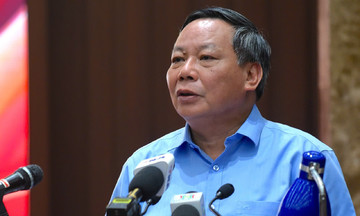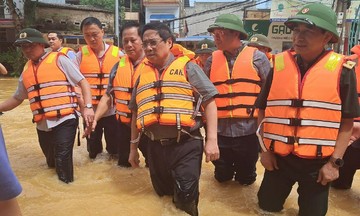On 28/8, the Hanoi People's Committee began soliciting public feedback on a draft regulation for implementing low emission zones (LEZ) within the city, pursuant to Article 28 of the Capital Law.
An LEZ is a designated area within a city with high air pollution levels. Vehicles operating in this zone must meet strict emission standards. Non-compliant vehicles will be restricted or subject to fees.
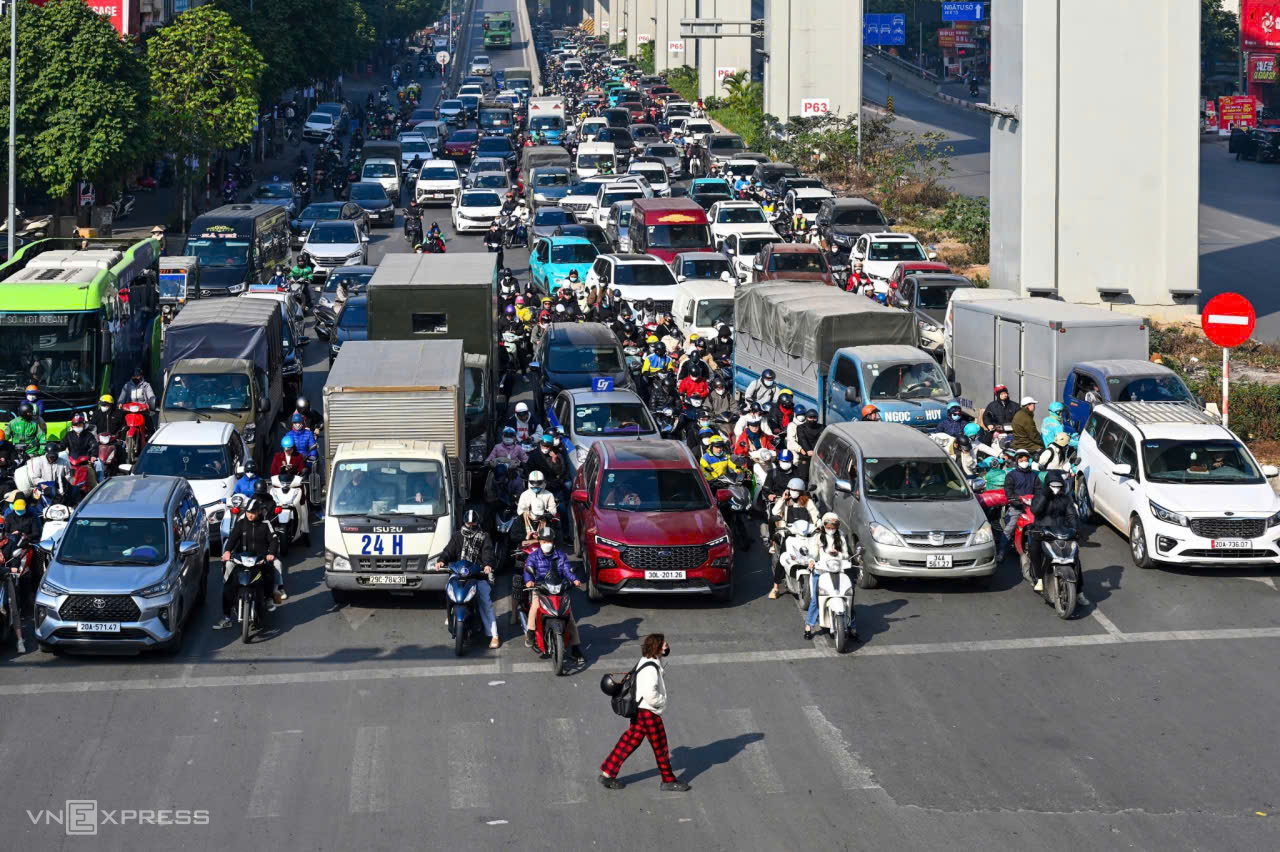 |
Traffic on Ring Road 2, Nga Tu So section. Photo: Giang Huy |
Traffic on Ring Road 2, Nga Tu So section. Photo: Giang Huy
The draft largely retains the content of Resolution 47/2024 of the City Council on implementing low emission zones, adjusting only the timeline and scope to align with Directive 20 of the Prime Minister on urgent tasks to prevent and address environmental pollution.
Resolution 47 originally proposed a pilot LEZ program from 2025 to 2030 in districts of the former Hoan Kiem and Ba Dinh, with expansion to other qualifying areas from 2031 onward.
The new draft advances the timeline by 5 years and expands the scope. From 1/7/2026, the LEZ will be enforced within Ring Road 1; from 1/1/2028, it will extend to Ring Road 2; and from 1/1/2030, it will encompass Ring Road 3, with encouragement for other communes and wards to establish their own LEZs.
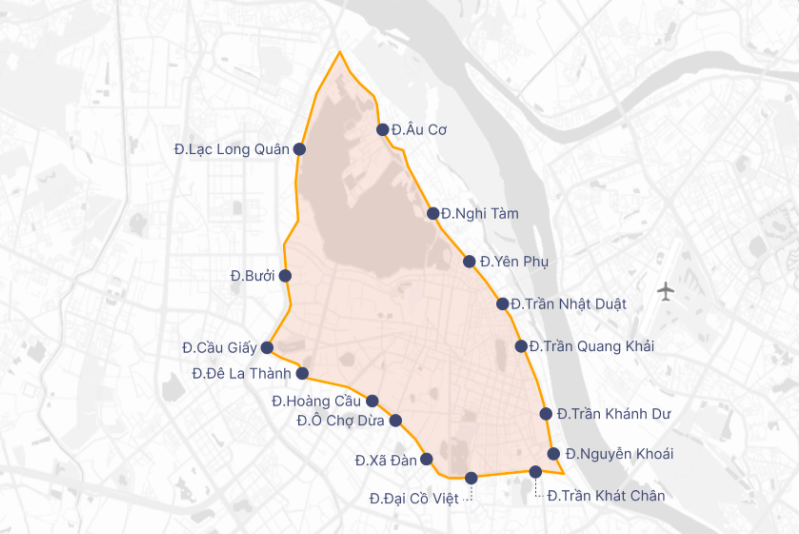 |
Areas where gasoline and diesel-powered motorcycles will be banned from 1/7/2026. Graphics: Hoang Khanh |
Areas where gasoline and diesel-powered motorcycles will be banned from 1/7/2026. Graphics: Hoang Khanh
From 2031 onward, any area meeting one of the criteria outlined in Article 4 of the Resolution must implement an LEZ. Article 4 specifies three criteria for LEZ designation.
The first criterion is being within a strictly protected or emission-restricted zone as defined in the city's master plan to 2030, with a vision to 2050. This includes residential areas in the 12 inner districts: Ba Dinh, Hoan Kiem, Dong Da, Hai Ba Trung, Thanh Xuan, Cau Giay, Hoang Mai, Tay Ho, Long Bien, Bac Tu Liem, Nam Tu Liem, and Ha Dong.
The second criterion involves areas experiencing frequent traffic congestion from levels D to F according to TCVN 13592:2022 (Urban Roads - Design Requirements). This standard uses Level of Service (LOS) to measure traffic flow quality, ranging from A (free flow) to F (gridlock). Levels D, E, and F indicate increasing congestion.
The third criterion is based on annual average air quality not meeting national standards for at least one recent year, measured by key parameters: SO2, NO2, total suspended particulates (TSP), PM10, and PM2.5.
| Documents | Timeline | Restricted Vehicles | Scope |
| Hanoi Resolution 47/2024 | 2025-2030 | Ban on heavy diesel trucks; restrictions or bans on cars not meeting Euro 4 emission standards and motorcycles not meeting Euro 2 standards within the LEZ, based on time or location | LEZ in parts of Hoan Kiem and former Ba Dinh districts |
| 2031 onward | Expansion to other areas meeting specific conditions | ||
| Prime Minister's Directive 20/2025 | 1/7/2026 | Ban on fossil fuel (gasoline, diesel) motorcycles | Within Ring Road 1 |
| 1/1/2028 | Ban on fossil fuel motorcycles; restrictions on fossil fuel cars | Within Ring Roads 1 and 2 | |
| From 2030 onward | Within Ring Roads 1, 2, and 3 | ||
| Draft Hanoi Resolution | From 1/7/2026 | Ban on heavy diesel trucks; ban on fossil fuel motorcycles; restrictions or bans on cars not meeting Euro 4 emission standards within the LEZ, based on time or location | Within Ring Road 1 |
| From 1/1/2028 | Within Ring Roads 1 and 2 | ||
| From 1/1/2030 | Within Ring Roads 1, 2, and 3, with encouragement for other areas |
Within LEZs, heavy diesel trucks and fossil fuel-powered motorcycles will be banned. Cars not meeting Euro 4 emission standards will face restrictions based on time and location.
The Hanoi People's Committee will propose fees for high-emission vehicles and those discouraged within the LEZ.
The city will explore support policies for residents and businesses within the LEZ to transition from fossil fuel vehicles to clean energy and zero-emission alternatives.
The draft resolution is expected to be submitted to the City Council for approval at the end of 2025 and take effect in 2026.
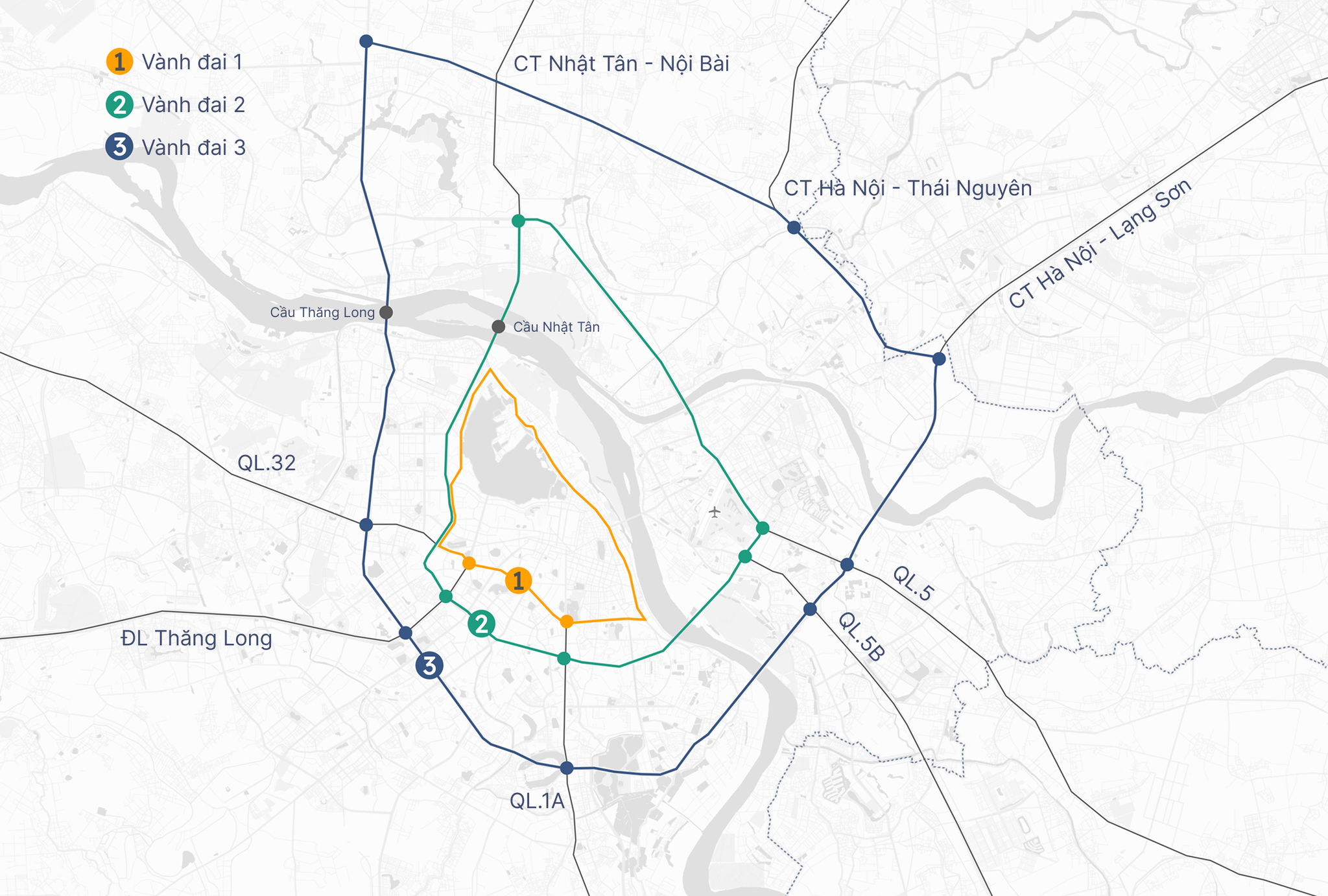 |
Hanoi's three ring roads. Graphics: Hoang Khanh |
Hanoi's three ring roads. Graphics: Hoang Khanh
Hanoi is grappling with air pollution. According to the National Environmental Status Report 2016-2020, the city's annual average PM2.5 concentration is nearly double the national standard. The annual average PM10 concentration exceeds the Vietnamese standard by 1.3 to 1.6 times.
The city identifies road traffic emissions as the primary source of air pollution, accounting for 58% to 74% depending on the time (motorcycles being the main contributors, followed by trucks and taxis), along with road dust.
According to the Department of Construction, as of the end of 2024, Hanoi had over 9.2 million registered vehicles, excluding those belonging to central agencies. This includes 1.1 million cars and over 6.9 million motorcycles. Additionally, approximately 1.2 million personal cars and motorcycles from other provinces and cities circulate within Hanoi.
Vo Hai



